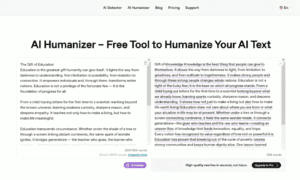In today’s digital transformation era, artificial intelligence (AI) is reshaping industries at an unprecedented pace, and the property and casualty (P&C) insurance sector is no exception. AI-driven innovations stream stream operations, enhance risk assessments, and redefine fraud detection mechanisms. This article delves into the significant AI advancements revolutionizing the insurance landscape, providing insights into the transformative role of predictive analytics, machine learning, and cloud-based solutions. The research, conducted by Naveen Kondeti, offers an in-depth exploration of AI’s integration into the insurance industry, highlighting its potential to increase efficiency and improve customer experiences.
Overcoming Legacy Challenges in Insurance Technology
Despite the insurance industry’s rapid evolution, many firms still operate on outdated systems. Research indicates that over 80% of insurers rely on platforms more than a decade old, consuming significant IT budgets while limiting opportunities for innovation. These legacy infrastructures pose major integration challenges, preventing seamless adoption of AI-powered solutions. However, the industry is undergoing a paradigm shift, with companies prioritizing digital transformation initiatives. The move toward cloud-based platforms and microservices architecture is reducing operational costs, enhancing real-time data processing, and allowing for greater scalability.
AI-Powered Underwriting for Enhanced Risk Assessment
Underwriting is a cornerstone of insurance operations, and AI is revolutionizing this process. Machine learning models are significantly improving risk classification accuracy, reducing underwriting decision times, and enabling insurers to automate risk assessment processes. By integrating real-time data from diverse sources such as IoT sensors, satellite imagery, and public records, AI enhances property evaluations and strengthens risk prediction capabilities. Computer vision technology further augments underwriting accuracy, minimizing the need for manual inspections while ensuring fair and transparent pricing models.
Automation in Claims Processing for Greater Efficiency
Claims management is undergoing a major transformation, thanks to AI-powered automation. AI-driven claims systems streamline documentation analysis, reducing processing times from days to mere seconds. Automated claims triage minimizes manual interventions, expediting settlements and improving customer satisfaction rates. By leveraging predictive analytics, insurers can better assess claim severity, optimize fraud detection, and prevent unnecessary financial losses. The adoption of AI-assisted decision support systems is also enhancing adjuster productivity, allowing them to focus on complex claims requiring human expertise.
Advanced Fraud Detection Mechanisms
Insurance fraud remains a significant challenge, costing billions each year. AI is transforming fraud detection by utilizing pattern recognition, behavioral analytics, and real-time fraud scoring. Machine learning models, trained on extensive datasets, can accurately identify fraudulent claims while reducing false positives. The incorporation of social network analysis enables insurers to uncover organized fraud rings, enhancing investigative efficiency. Additionally, real-time fraud prevention systems can assess claims within milliseconds, improving risk evaluation and minimizing fraudulent payouts, ultimately protecting the industry from financial losses.
Cloud-Based Platforms for Seamless Integration
The insurance industry is rapidly embracing cloud computing to boost operational agility. Cloud-based platforms enable real-time data processing, enhance system reliability, and lower infrastructure costs. These solutions help insurers efficiently manage large-scale transactions while strengthening cybersecurity measures. Additionally, cloud adoption improves disaster recovery capabilities, ensuring business continuity during disruptions. By integrating AI-driven analytics into cloud platforms, insurers can gain deeper insights, refine pricing strategies, and deliver personalized coverage to customers.
Strategic Implementation of AI in Insurance
AI is transforming insurance beyond automation, influencing strategy and innovation. Natural language processing enhances customer engagement, while blockchain-integrated AI ensures secure, transparent transactions. Generative AI streamlines underwriting and claims processing, personalizing policy offerings. As regulations evolve, insurers must ensure ethical AI usage and transparency in decision-making. To stay competitive, firms must invest in AI-driven solutions, upskill employees, and foster a data-centric mindset. Embracing these advancements will drive efficiency, risk assessment accuracy, and customer satisfaction, securing long-term growth in the evolving insurance landscape.
In conclusion, Naveen Kondeti’s research underscores the transformative potential of AI in property and casualty insurance. AI-driven underwriting, claims automation, fraud detection, and cloud integration are optimizing efficiency and enhancing customer experiences. As the industry continues to evolve, insurers that embrace AI-powered innovations will gain a competitive edge, ensuring sustainable growth in the digital age. By striking a balance between innovation and regulatory compliance, the future of insurance technology promises a more secure, intelligent, and customer-centric ecosystem.



































